[three_fourth_last]Katie Ledecky smashed the women’s 400m freestyle world record last week in a time of 3:58.86. Here’s our top 5 freestyle technique takeaways from the swim.
1. Don’t Hang Around (While Breathing)
This image shows Ledecky after taking a breath. She’s gets her breath quickly and returns her face back down right away. Her lead arm supports her while breathing which helps her get a better catch with that arm. In our work with triathletes and Master’s swimmers we see about 10% of athletes pulling through too early while breathing which means they miss the early part of their catch.
2. High Elbow Recovery Past Head
Ledecky keeps a high elbow just past her head during the recovery. This ensures she enters with her fingertips first, followed by her wrist then elbow. It also helps her use her the bigger muscles in her back and shoulder to bring her arm over in the recovery (rather than just her deltoids like we often see with athletes that recover with a low elbow).
3. Head Stays Low When Breathing
This image shows the highest point at which Ledecky brings her mouth above the surface. She rotates her head to the lowest point at which she can get a breath which allows her to keep one goggle in the water (split vision). Swimmers will often rotate their head all the way out of the water which causes their elbow to drop and hip to push out to the side. This results in a poor catch and increased drag on the body.
4. Perfect Alignment
Ledecky enters in front of her ear each time, holds the extension inline with her shoulder and then pulls through following the outside line of her body. This not only puts her in the most streamlined position possible during each stroke but it helps drive her forward as she doesn’t come across her body or go out wide when pulling (which we see in about 60% of athletes before we begin working with them).
5. Hand Always Angled Down From Forearm During Pull
In every part of her catch and pull, Ledecky maintains a forward hand position where she angles her hand slightly down from her forearm. This helps her hold more water with each stroke and allows her to ‘anchor’ herself during the catch phase and drive her body past her hand. It’s common for beginners to drop their wrist when extending forward.
In our email newsletter we regularly share freestyle tips to help swimmers and triathletes unlock their own swim speed.
Watch the full video below (select a slower play speed to watch it in slow motion):
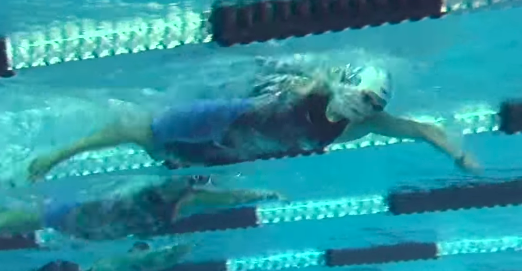
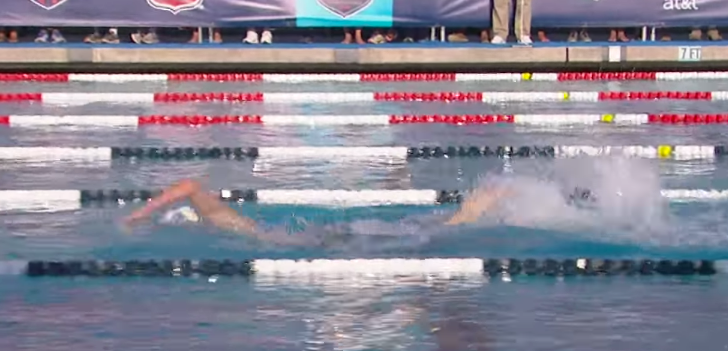
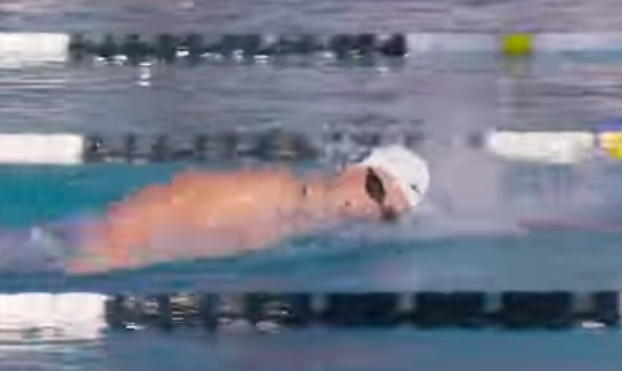
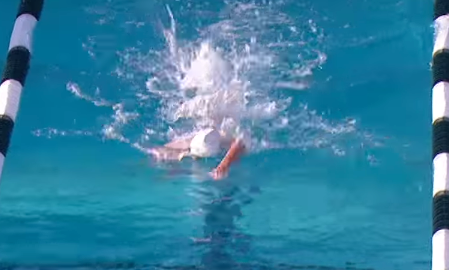
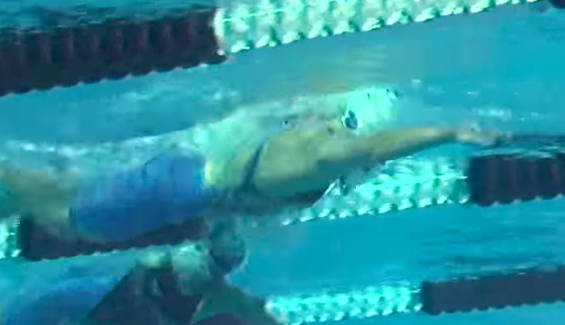



Great analysis Brenton, they really are the key points for all swimmers, but I’d like to add that snatching a breath may lead to insufficient oxygen for swimmers who aren’t as fit and coordinated as Katie. Her stroke count was 39, then 40 and she doesn’t appear to be a tall girl compared to 2nd placed girl, who was taller on a lower podium and had a very low stroke count.
happy Swimming! John
Superior analysis! One point: In #3 above, ” Swimmers will often rotate their head all the way out of the water which causes their elbow to drop and hip to push out to the side.”…..It would be helpful to clarify which elbow and to which side the analysis refers. (i.e. when breathing to the right, which elbow & which hip?).
I disagree with commenter John’s insufficient oxygen comment: Unless one is speaking of a fairly small child working quite hard, an oxygen deficit will not occur with regular breathing, even if breaths are relatively shallow. The lungs’ residual capacity will provide an adequate oxygen buffer to prevent blood hemoglobin from oxygen desaturation. Carbon dioxide (which drives breathing) will accumulate quickly with shallow breathing
and will necessarily increase minute volume (breathing rate times
depth of breathing) to blow off that excess carbon dioxide concomitantly resulting in adequate oxygen (air exchange).
The real danger is ALLOWING carbon dioxide to accumulate, which snatching a breath CAN do, and against which one must train: with head in the water prior to that “snatched breath” one must fully exhale thus blowing off a maximal amount of carbon dioxide, thus making maximal “room” for a quick and DEEP snatched breath”. Excess carbon dioxide accumulation will quickly exhaust any athlete and for some complex physiological reasons make oxygen less available to muscles! So: breathe deep!
Thanks Jeff, you’ve expanded my knowledge. John
Agreed – that’s why personal coaching is really important.